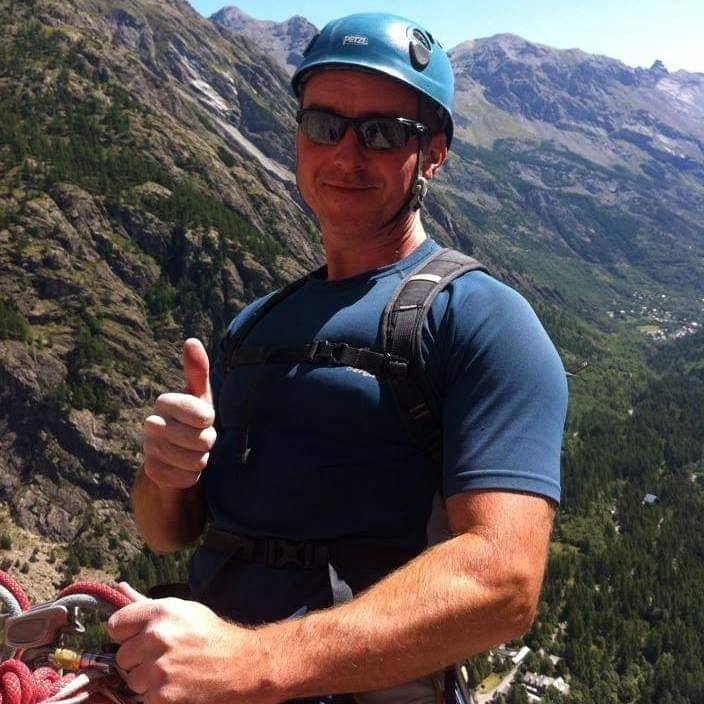Top Tips for Winter Hiking
Winter is a beautiful time of year in the Lake District. Snow-covered mountaintops offer hikers rewarding days in the hills, but the risks are higher. Before heading out this winter, make sure you brush up on your winter hiking skills with our top tips, including some extra, exclusive tips from a mountain leader and local outdoor enthusiasts!
The Lake District National Park Authority is doing all they can this winter to raise awareness of the importance of winter skills and planning in the mountains during the colder months. Following an increase in hikers in the Lakes during recent years, the national park launched a Lake District winter safety campaign at Kendal Mountain Festival in November including tips from expert speakers and outdoor enthusiasts including wild swimmer Winnie Poaty and wellness advocate and adventurer Kate Applebee.
The Lake District National Park Authority Chief Executive, Richard Leafe, encouraged people to come forward at the festival and share their winter adventure tips. He said,
“I am really pleased that there has been a wave of people discovering the Lake District for the first time, or rediscovering the great outdoors and all the health and wellbeing advantages it brings. I want to ensure that each and every person who comes to the Lake District has all the information and guidance possible at their fingertips to ensure a safe and enjoyable visit, which is where this new winter safety campaign comes in.”
Here are our top tips for staying safe in the Lakes this winter…
Plan your route thoroughly
Planning is always essential when heading off on a hike, but winter’s colder conditions mean there are more things to consider. Checking the mountain weather forecast (MWIS) for your chosen route is imperative. If the mountains are snow-covered, having a look at the avalanche forecast is advisable. If the forecasts are showing weather warnings, it may be best to re-arrange your hike for a clearer, safer day.
The mountains have been around a long time; they’re not going anywhere.
Pack the right gear (and know how to use it)
Hiking in winter requires more gear compared to summer, meaning a heavier pack. Make sure you have a decent-sized backpack (55-65L) with room for extra supplies such as spare layers (base layers, jumpers, hat, scarf, and gloves), sufficient, high-energy food and water, head-torch with spare batteries, map and compass, first aid kit, sunglasses and if you need them gaiters, crampons, ice-axe, and trekking poles.
Even if you’re not planning on camping, it’s always worth packing a compact sleeping bag, roll mat and emergency shelter in case you get into difficulty.
Wake up early and finish early
The daylight hours during the wintertime are sparse, making big mountain days a struggle to fit in. It is a good idea to be realistic about what you think you can achieve whilst it’s light, also taking into account hiking in snow often slows you down. Shorter routes may be best in winter, especially if you’re new to hiking in snow and colder conditions.
Why not check out our blog (Top Five Short Lake District Mountain Hikes for Short Winter Days) for some ideas!
Layer up!
You may feel as though you’re wearing everything you own when hiking in the winter, but it is important to layer up! Using the layering system wearing several layers rather than one or two thick ones is more effective. It allows you to adapt to the environment better, taking a layer off if you’re too warm and adding them if you’re cold. A simple 3-layer system consisting of a base-layer (a snug-fitting layer to regulate body temperature and control moisture), a mid-layer (a fleece to insulate), and an out-layer (a waterproof to protect against wind and rain) is the best-tested system.
Avoid cotton clothing as this holds moisture and will make you cold when you sweat or if it gets wet.
Choose your footwear wisely
Your feet won’t thank you for wearing your lightweight summer trail shoes on a cold, snowy mountain. Winter hiking requires a sturdy boot designed for tougher conditions. Investing in a pair of 3-4 season boots that are compatible with winter gear such as crampons is a good idea, especially if you’re planning on expanding your winter skills.
Winter boots vary from simpler 3 season boots that are more flexible and designed for autumn-winter hikes in low snow to larger, 4 season bulky boots designed for mountaineering in thick snow and ice.
Invest in a winter skills course
If you want to be extra-safe in the mountains during winter, expanding your skills by learning from a professional is a good step. Lake District Fell Top Assessors offer winter skills courses taking solo hikers or groups up Helvellyn for the day whilst they take weather readings. Courses start at £120 with prices varying depending on the package chosen.
Participating in a winter skills course offered this way means you are funding the national park at the same time as learning essential, helpful skills.
Carl Halliday
@carlhalliday
“A sound foundation of map-reading and navigation is a good starting point for winter hiking. You are far more likely to find yourself in poor visibility (occasionally zero visibility) in winter. Deteriorating weather, low cloud and snow can often result in a white out. Knowing how to use a map and compass in winter, and even backing that up with a GPS can be the difference between a rewarding day or a dangerous one.”
Carl Halliday
AMI Mountaineering and Climbing Instructor and owner of ‘Mountain Escape: Walk-Scramble-Climb’
Kate Applebee
@kate.s.applebee
“Always plan a contingency to exposed routes- have a safe mapped out ‘emergency exit’ which you can use to come off the high peaks quickly and safely in the case the weather changes, the wind picks up or you’ve simply had enough! Always think, ‘could I survive out for a night with the kit I have today?’ That doesn’t mean taking a full camping kit, but it does mean thinking about whether you’ve got enough of the right gear to survive unplanned time outdoors.”
Kate Applebee
Wellness advocate and local adventurer
Rory Southworth
@rorysouthworth
“Carrying emergency supplies is essential for staying safe in winter. I always pack a foil blanket and foil bivy bag in case of an emergency, as well as spare warm layers and waterproof trousers. My first aid kit is lightweight and I always pack a spare small headtorch. If you know a route well and feel safe and comfortable doing so, a headtorch hiking session (with a very powerful light setting) in the dark is great!”
Rory southworth
Mountain runner and Ordnance Survey Champion
Written by Kate Dawson, Content Writer for One Lake District



